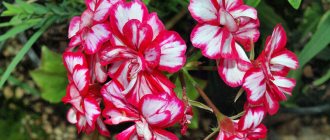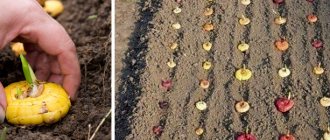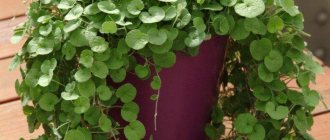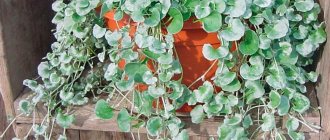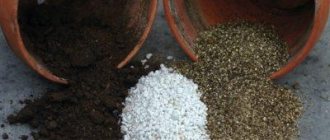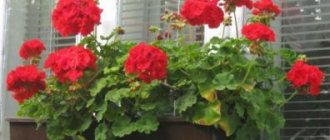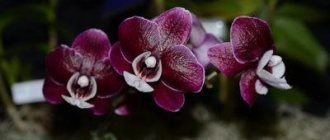Tulip geranium is one of the most extravagant and beautiful flowers of the geranium genus. Its inflorescences resemble lush bouquets of not fully opened tulip buds in miniature. Any housewife would be delighted to see such a flower on her windowsill, but, unfortunately, despite the fact that it was first bred more than 50 years ago, it is rare and little-known in our country.
The best varieties
Due to the fact that the structure of the flower itself is too inconvenient for carrying out selective measures, the lion's share of all attempts associated with the breeding of new varieties of tulip-shaped pelargonium are unsuccessful. In this regard, varieties of this type are very few. All of them do not tolerate cold equally well, so in winter they should be kept only in a heated room. The most common on the European continent today are:
- Patricia Andrea is the ancestor of the variety. Geranium is medium bushy, strong, of average height for geraniums. When planted in open ground in summer with proper care, it reaches 50 cm in height. The inflorescences are lush, consisting of flowers very similar to unopened tulips.
- Red Pandora is a more demanding variety. The bush is smaller in height and weaker in structure. But despite the fact that its inflorescences are as lush as those of the ancestor, their color is much richer and brighter. Flowers can often open completely, so in this case it will be much easier to pollinate the flower and get seeds from it.
- Conny is a dwarf variety with carved leaves and slight bushiness. It is distinguished by more elongated flowers in inflorescences. The color of the inflorescences is bright red, rich.
- Emma fran Bengtsbo - distinguished by foliage of a bright emerald hue glistening in the sun. Each leaf seems to be slightly curled upward. This pelargonium is loved not only for the peculiar (light pink) shade of its elongated flowers, but also for its relatively large size. With good care, the bush stretches up to 80 cm in height.
- Helma is the owner of the largest inflorescences, each of which consists of 40 tulip-shaped pink buds. For all that, it is quite squat and rarely grows more than 30 cm in height. It is also distinguished by its velvety foliage, which is rare for tulip-shaped varieties.
general characteristics
Pelargonium inflorescences look elegant; the flowers have elongated petals that tightly surround the stamen. The color variations are varied and depend on the plant variety, but the appearance of each is charming and sophisticated in its own way.
The unusual form of pelargonium was achieved artificially, through a long process of hybridization, in which zonal geranium with a simple flat corolla was taken as a basis. However, there is a version that the curved shape of the petals was obtained through the process of natural mutation.
Pelargonium tulipaceae
Geranium is very difficult to hybridize; during the growth process, it tends to return to its original appearance. However, breeders from the American nursery Andrea managed to develop 14 varieties of a luxurious flower with an amazing semi-open bud shape, which remains unchanged throughout the entire flowering period.
Description of the plant:
- bush height – ranges from 30 to 75 cm, depending on the variety;
- color – from beige to rich dark red;
- leaves are dark, green, hard, with a slight shine, with veins, one side is darker than the other;
- each flower contains 7-9 petals;
- the edges of the petal are smooth or jagged;
- the petals of the flower are curled up, tightly covering the stamens, which makes plant selection difficult;
- on each stem there are up to 50 flowers, collected in aerial inflorescences.
Interesting. The plant is not only luxurious, but also useful. By releasing phytoncides, it disinfects the air; geranium oil helps with headaches and repels insects. Tea with pelargonium petals has a calming effect.
Caring for tulip pelargonium at home
All geraniums are quite unpretentious plants, but first of all, caring for them consists of digging up flowers from flower beds in time at the beginning of cold weather and placing them in heated rooms for the winter, since, being a native of the southern tropical part of Africa, plants die when exposed to frost .
Location and lighting
photo: tulip geranium
For plants that are not trained and not intended for planting in open ground, you should find a place with a minimum number of drafts. If the window will often open, it is best to refuse to place an indoor variety of tulip-shaped geranium on its windowsill. It is also advisable to place geraniums in a partially shaded area. The plant will tolerate two hours a day of direct sun exposure well. But being under the scorching rays of the sun all day long will be very stressful for pelargonium.
Important! In the northern regions, due to the shortened daylight hours, the plant will have to be illuminated with fluorescent lamps so that its full daylight hours are at least 10 hours.
Temperature
Care also involves maintaining the correct temperature. In summer, the temperature should fluctuate in the range of 22–26 °C. In the fall, tulip-shaped geraniums must be acclimated to winter temperatures. This is done gradually, since sudden temperature changes may cause indoor tulip-shaped varieties to begin to hurt. In winter, during hibernation, the plant should be kept at a temperature of 15 ° C (± 2 °).
Watering and humidity
During the period of active growing and flowering, watering should be especially frequent. Every time you feel that the top layer of soil in a pot or in the root part of a flower bed has dried out, you should immediately water it. Most often, in the spring-autumn period, it is enough to water once every 2-3 days. But if the plant grows in a very cramped small pot, more frequent watering may be necessary.
Attention! Tulip-shaped pelargonium does not respond well to waterlogging! Therefore, in the case of this flower, spraying the vegetative part, so beloved by gardeners, is allowed only for exceptional needs (for medicinal purposes, for example).
Caring for any indoor flower at home is based on correctly observing the watering schedule until the end of the season. Often gardeners practice reducing the amount of watering after the plant has finished flowering. But if you want to try to propagate geranium using seed, remember! In order for the seeds to be strong and healthy, in a word – germinating, their formation also requires high-quality and timely watering.
An important factor in the correct and healthy development of a flower is the presence of a good drainage layer. If the drainage is poor, the flower will wither due to the fact that its root system will simply rot.
Top dressing
When feeding, it is best to focus on potassium and phosphorus fertilizers. Of course, from the very beginning of the spring growing season, you can, for a faster awakening, spur tulip-shaped geraniums with nitrogen fertilizer. But if you use it often enough, the tulip-shaped geranium, instead of giving abundant color, will all disappear into lush foliage, and the inflorescences will be rare and inconspicuous.
The same applies to the passion for organic fertilizers. A lot of organic matter will also provoke the growth of useless tops.
When using any fertilizer, the main thing is to respect the boundaries of what is permitted. If you reward your plant with an excessive concentration of mineral water or organic matter, it will thank you with excessively saturated and frequent foliage, but do not expect flowering from it. Therefore, all nutrient concentrations must be strictly adjusted in accordance with the instructions that come with the fertilizer!
Growing problems, diseases and pests
Geranium is not protected from disease. The main signs of flower ailments:
- The appearance of white circles on the leaf blades of geraniums. This is the first sign of rust disease.
- Gray loose spots on the bottom of the leaf. This symptom indicates infection with gray mold.
- The stems and leaves take on an unhealthy red tint if the flower is frozen.
Signs of geranium diseases
Most often, pelargonium is affected by the following pests:
- whitefly butterfly;
- spider mite;
- mealy worm.
Remember! When the first signs of the disease appear, immediate treatment is necessary.
How to deal with them
In the event of an invasion of any harmful insects, treatment with a soap solution or spraying with insecticides will help save the plant. The most effective means:
- Fitoverm;
- Fufa Nova;
- Aktara.
New generation products perfectly protect flowers not only as a preventive measure, but even during illness. If signs of disease are detected, it is imperative to remove all infected leaves.
Pelargonium tulipaceae
The tulip-shaped subspecies of geranium requires care and careful attention, but following all the rules will invariably allow you to grow a beautiful flower with the most abundant flowering. The huge caps of inflorescences of this amazing species will not leave anyone indifferent.
Transfer
Any tulip-shaped geranium, regardless of variety and type, is poorly suited to replanting. Therefore, proper care involves replanting the plant only exclusively:
- in cases of age, when the geranium has grown to such an extent that it physically has little space in the pot;
- for medicinal purposes if the soil in the pot is affected by mold or pests;
- in cases of force majeure (the cat turned the pot over, some harmful liquid was accidentally spilled into the soil, etc.)
How to plant?
Let's consider the main points regarding the proper planting of tulip-shaped pelargonium.
Location and lighting
Tulip pelargonium, like all its “brothers”, prefers sunlight to shaded areas. Note that the plant is therefore best kept on a well-lit windowsill, shaded from direct sunlight in the summer. If you provide tulip-shaped pelargonium with additional artificial lighting in winter, the plant can delight you with its flowering even in cold weather.
Advice. It is strictly not recommended to grow this pelargonium in the shade. With a lack of light, the shoots of the plant will begin to stretch in length, weakening and turning pale. The leaves also become pale and unsightly, and the buds will not be able to fully open. Thus, the plant will lose most of its decorative effect.
The soil
To grow tulip-shaped geraniums, it is recommended to use a ready-made soil mixture. However, you can mix the substrate yourself: to do this, you need to take peat and garden soil in equal proportions. It is also necessary to add a little river sand to the resulting mixture to loosen the soil.
Since tulip-shaped pelargonium does not tolerate stagnant moisture, a drainage layer of expanded clay pebbles must be placed on the bottom of the pot before adding soil.
Trimming
Any plant will bush more actively if it is properly pruned or pinched in time (which applies more to young shoots). These procedures are carried out in late winter or early spring, before the geranium comes out of hibernation. This is done according to the following scheme:
- pinching: done above the eighth leaf of the shoot;
- pruning: done on the basis that 5 buds remain from the root to the place where the stem is trimmed.
- Upon completion of the procedure, the cut sites must be covered with activated carbon or treated with brilliant green.
Along with pruning or pinching, it is recommended to remove all last year's inflorescences.
Attention! Pruning should be done with clean hands, and tools should be treated with an antiseptic (potassium permanganate solution or alcohol)!
Advice from flower growers
Royal pelargonium is the most capricious and demanding species, and often refuses to bloom. Experts say one of the reasons is that the pot is too large. The plant begins to abundantly grow green mass and spends all its energy on the formation of new leaves and the development of roots. An equally common reason for geraniums not to bloom is the lack of a dormant period.
Fixing this situation is quite simple. To do this, you need to completely stop all feeding, starting in September, and in early November, take the plant to a cool room and reduce watering. Another reason why geraniums fail to bloom may be the presence of fungal diseases. A sick plant spends too much energy fighting the infection and is unable to form new buds.
The cessation of flowering can also be caused by frequent replanting of the bush. The king geranium does not like change of place, so it may react in this way. If the plant does bloom, but the buds and flower stalks fall off too quickly, then the problem is most likely due to the dry air in the room. To increase humidity, it is recommended to use electric humidifiers or place trays with wet pebbles in close proximity to the flower. If all conditions are strictly met, but pelargonium still refuses to bloom, then the reason may lie in the chemical composition of the substrate. Thus, excessive nitrogen content leads to the formation of a beautiful and strong, but at the same time sparsely flowering bush, and excessive acidity generally deprives the plant of its color.
Thus, in order to properly grow royal geraniums, you need to work hard. But in the future the plant will delight others with its magnificent flowering and bright colors.
For tips on caring for royal geraniums, watch the video below.
Reproduction
To propagate tulip geranium, you can use the same methods (besides dividing the bush) as in the case of any other geranium, that is, these can be:
- seeds (it should be borne in mind that when propagated by seeds, each new plant may lose varietal qualities);
- cuttings (in the fall, the apical cutting with a couple of leaves is cut off from a tulip-shaped geranium and placed in water, after a while it gives roots and is planted in a pot, after a couple of new leaves grow, the main shoot is pinched).
Since tulip geranium seeds at home rarely retain the distinctive hybrid properties of the mother species and are 70% underdeveloped, a simpler and more effective cutting method is the main one for plants of these varieties.
External features
The variety has double large flowers of a rich pink hue. Externally, the buds resemble peonies and look extremely decorative. The bush grows quite tall, and against the background of its thick, bright green foliage, the double flower buds look especially impressive.
The shoots of the plant are quite strong and long, so they definitely need pruning and pinching. Otherwise, the bush will grow as it wants - and you won’t get a compact, neat appearance.
